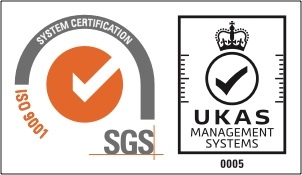Are you struggling to find the right leadership approach for your diverse team? Do you find yourself using the same management style regardless of the situation, only to see mixed results? You're not alone. Many managers face this challenge, but there's a proven solution: Situational Leadership®.
Situational leadership theory revolutionises how you approach team management by recognising that effective leadership isn't about sticking to one style, it's about adapting your approach based on your team's needs and the specific situation at hand.
What is Situational Leadership® Theory?
Situational leadership theory, developed by Ken Blanchard and Paul Hersey, posits that the most effective leadership style varies depending on the maturity level of your followers and the specific task at hand. Rather than applying a one-size-fits-all approach, you learn to flex your leadership style to maximise both individual growth and team performance.
This adaptive approach recognises that your team members are at different stages of development, possess varying skill levels, and require different amounts of support and direction. According to research by the Center for Leadership Studies, organisations implementing situational leadership see up to 20% improvement in employee performance and engagement.
The Four Leadership Styles Explained
Situational leadership identifies four distinct leadership styles, each suited to different circumstances:
Style 1: Directing (High Direction, Low Support)
This style works best with new team members or when tackling unfamiliar tasks. You provide clear instructions, set expectations, and closely monitor progress. Your role is to guide and teach, ensuring your team member understands exactly what needs to be done and how to do it.
Style 2: Coaching (High Direction, High Support)
As your team member develops competence but may lack confidence, you maintain high direction while increasing support. You explain decisions, ask for input, and provide encouragement. This style helps build both skills and confidence simultaneously.
Style 3: Supporting (Low Direction, High Support)
When your team member has the skills but may lack motivation or confidence, you reduce direction and focus on support. You facilitate problem-solving, listen actively, and encourage decision-making. Your role shifts from instructor to facilitator.
Style 4: Delegating (Low Direction, Low Support)
For highly competent and committed team members, you can delegate responsibility and provide minimal supervision. You set the overall direction but allow complete autonomy in how tasks are completed.
Assessing Your Team's Development Level
The key to successful situational leadership lies in accurately assessing your team member's development level for each specific task. This assessment considers two critical factors:
Competence: Does your team member have the necessary skills, knowledge, and experience to complete the task effectively?
Commitment: Is your team member motivated, confident, and willing to take responsibility for the task?
By evaluating both competence and commitment, you can determine which of the four leadership styles will be most effective. Remember, development levels can vary by task, someone might be highly developed in one area but require more direction in another.
Implementing Situational Leadership®in Your Organisation
Successfully implementing situational leadership requires a systematic approach:
Start with Self-Assessment: Evaluate your current leadership style preferences and identify areas where you need to develop flexibility.
Assess Your Team: For each team member, assess their development level across different tasks and responsibilities.
Practice Flexibility: Consciously practice switching between leadership styles based on your assessments.
Communicate Openly: Explain your approach to your team. When they understand why you're adjusting your style, they're more likely to respond positively.
Monitor and Adjust: Regularly reassess development levels as your team members grow and situations change.
Real-World Applications and Case Studies
Consider Sarah, a project manager leading a diverse team. Her newest team member, James, requires a directing style for client presentations but can be delegated to for data analysis tasks. Meanwhile, her experienced team member, Lisa, needs coaching support when taking on leadership responsibilities but can be fully delegated to for technical work.
By applying situational leadership principles, Sarah increased her team's project completion rate by 35% and significantly improved team satisfaction scores. This flexibility allowed each team member to develop at their own pace while maintaining high performance standards.
Why Choose Professional Situational Leadership Training
While the concepts of situational leadership may seem straightforward, mastering the nuances requires professional development. Quality training programmes provide:
- Practical Assessment Tools: Learn to accurately evaluate development levels
- Role-Playing Opportunities: Practice switching between leadership styles in safe environments
- Personalised Feedback: Receive expert guidance on your leadership approach
- Ongoing Support: Access resources and community for continued development
Professional situational leadership training transforms theoretical knowledge into practical skills you can immediately apply in your workplace.
The investment in situational leadership training pays dividends through improved team performance, increased employee engagement, and enhanced leadership effectiveness. Research consistently shows that leaders who adapt their style to the situation achieve better results than those who rely on a single approach.
Ready to transform your leadership approach? Situational Leadership® Training provides the framework and skills you need to become a truly adaptive leader, capable of bringing out the best in every team member, regardless of their development level or the challenges you face together.






